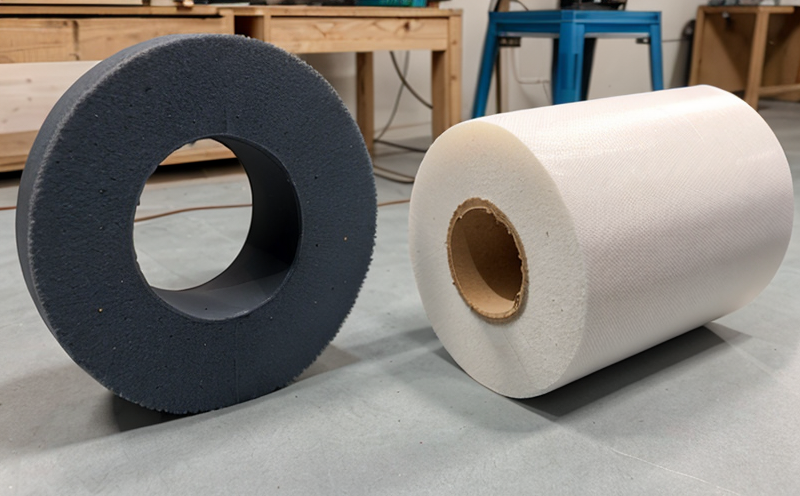ASTM B117 Salt Spray Corrosion Resistance of Metallic Furniture Components
The ASTM B117 standard is a widely recognized method used to evaluate the corrosion resistance of metallic materials through exposure to a salt spray environment. This test is particularly important for furniture manufacturers, especially those producing components like metal frames and hardware that are exposed to harsh environmental conditions over time.
Material quality testing is crucial in ensuring the longevity and reliability of products, especially in sectors where durability under adverse conditions is paramount. For furniture, the metal components need to withstand not only daily use but also external factors such as humidity, temperature fluctuations, and corrosive elements like salt spray. The ASTM B117 test provides a standardized approach to assessing how well these materials will perform in real-world environments.
The test method involves subjecting metallic specimens to a controlled environment of neutral salt solution vapor for extended periods. This exposure simulates the effects of marine atmospheres, industrial environments, and other conditions that can accelerate corrosion. The primary goal is to determine the time required for visible rust or other signs of corrosion to appear on the surface of the metal component.
The testing process begins with careful preparation of the specimens. Each piece must be thoroughly cleaned and dried before being mounted in a salt spray chamber. The chamber simulates an environment where high concentrations of sodium chloride (salt) are continuously atomized into the air, creating a corrosive atmosphere that mimics severe marine or industrial conditions.
After mounting, the specimens undergo continuous exposure to this salt spray for varying durations depending on the specific requirements and standards being adhered to. The test duration can range from 24 hours up to several weeks, with frequent observations made during the process. Observations include noting any signs of corrosion such as rust formation or changes in coloration.
The results are then analyzed based on visual inspections and recorded according to ASTM B117 standards. Compliance with these standards ensures consistency across different laboratories and provides a clear benchmark for evaluating material performance. This information is invaluable for quality managers, compliance officers, R&D engineers, and procurement teams as it helps them make informed decisions about material selection and product design.
Understanding the nuances of ASTM B117 testing is essential for furniture manufacturers aiming to produce high-quality products that meet both domestic and international standards. By adhering to this method, companies can ensure their metal components are robust enough to withstand challenging environments without compromising on aesthetic or functional integrity.
In conclusion, conducting ASTM B117 salt spray corrosion resistance tests on metallic furniture components is a critical step in quality assurance processes. It allows manufacturers to identify potential weaknesses early in the development stage and implement necessary improvements before mass production begins. This proactive approach not only enhances product durability but also builds trust with customers who expect reliable, long-lasting furniture.
Why It Matters
Ensuring that metallic components of furniture withstand corrosive environments is essential for maintaining the integrity and longevity of these products. Corrosion can significantly reduce the lifespan of metal parts, leading to premature failure and increased maintenance costs. By performing ASTM B117 tests, manufacturers can identify potential issues early on in the design phase, allowing them to make adjustments before production begins.
From an economic perspective, avoiding extensive repairs or replacements due to corrosion saves businesses money and resources. Additionally, satisfied customers are more likely to purchase from brands that demonstrate commitment to quality through rigorous testing procedures like ASTM B117. This not only boosts brand reputation but also contributes positively to market competitiveness.
In terms of environmental impact, using materials resistant to salt spray helps minimize waste by reducing the frequency of product replacements. Moreover, complying with international standards such as ASTM B117 ensures that products meet regulatory requirements set forth by various jurisdictions around the world. Adhering to these guidelines reflects a company's dedication to responsible business practices and sustainable operations.
The importance of this testing cannot be overstated for industries reliant on durable materials exposed to challenging environments. Furniture manufacturers, in particular, benefit greatly from understanding how their products will perform under extreme conditions. Implementing ASTM B117 test protocols allows them to anticipate challenges before they become significant problems, ultimately leading to improved product performance and customer satisfaction.
Benefits
- Enhanced Product Durability: By identifying potential corrosion issues early in the design process, manufacturers can improve the overall longevity of their furniture products.
- Better Customer Satisfaction: Ensuring that metal components meet or exceed industry standards leads to higher customer satisfaction and loyalty.
- Economic Efficiency: Early detection of material weaknesses reduces costs associated with warranty claims and rework due to failed components.
- Compliance with International Standards: Adhering to ASTM B117 ensures that products meet the required specifications set by international regulatory bodies, enhancing market access opportunities.





